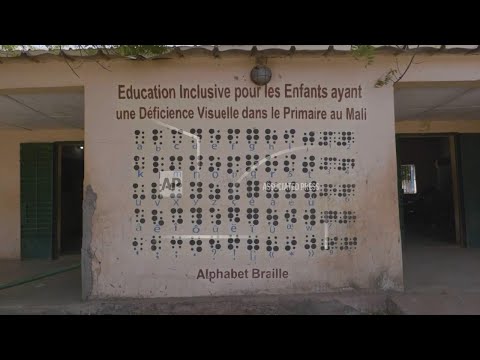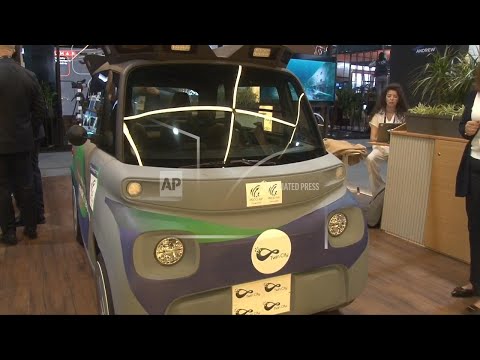(20 Mar 2025)
MALI BRAILLE
SOURCE: ASSOCIATED PRESS
RESTRICTION SUMMARY:
LENGTH: 5: 04
ASSOCIATED PRESS
Bamako, Mali – 27 January 2025
1. Various of Amadou Ndiaye playing guitar at Mali’s Institute for the Blind
2. SOUNDBITE (French) Amadou Ndiaye, blind social worker:
“Braille, touch, it’s really tactile development, so it really allowed me to – who knows whether I can say it or not, but – to start playing the guitar.”
ASSOCIATED PRESS
Bamako, Mali – 24 January 2025
3. Wide of office sign
4. Ndiaye working with women in office
5. SOUNDBITE (French) Amadou Ndiaye, blind social worker:
“Braille helped me live my life. Before, people asked themselves the question: Here is someone who can’t see, how will he make it? How will his life go? How will he integrate into society? But when I went to IGA (university in Bamako), when I started to write, I said to myself that really, everything that others do, I can do too.”
6. Various of Ndiaye working with women in office, reading braille
7. SOUNDBITE (French) Amadou Ndiaye, blind social worker:
“Right now, there is the reality of technology, it’s unavoidable now, and all those who are literate are expected to understand. So, what we can say, without forgetting braille – it is a tactile system of touching, so when we touch something, it also develops the sensitivity of the fingers – so what I can say is, we must not forget braille because of new technology.”
ASSOCIATED PRESS
Bamako, Mali – 17 January 2025
8. Wide of students walking into Mali’s Institute for the Blind (UMAV)
9. SOUNDBITE (French) Al Moustapha Dicko, teacher:
“We have a crisis of teaching materials. When you talk about teaching materials, you’re talking about books. This means that everyone must have a reading book. One student, one book. Since we don’t have that, we rely on the only book that we have.”
10. Various of Dicko working with braille typewriter.
11. Close of Dicko reading braille with his fingers
12. SOUNDBITE (French) Al Moustapha Dicko, teacher:
“For example, a blind person who learns braille, it is through writing itself that he integrates. Because the fact that he writes, he reads, it allows him to be at the same academic university level as the others. For example, he does – at school – he does the exams, he does the competitions, and that also allows him to access employment.”
13. Various of braille mural at Mali’s Institute for the Blind
ASSOCIATED PRESS
Dakar, Senegal – 10 February 2025
14. SOUNDBITE (French) Moussa Mbengue, program officer for inclusive education, Sightsavers:
“It is very important to highlight these technological advances, this technological progress. It is important for disabled people because it allows them to access a lot of things. But it cannot replace Braille. On the contrary, for me, technology complements braille. Technology offers voice synthesis and audio, but does not replace braille; on the contrary, it is technology that complements braille.”
ASSOCIATED PRESS
Bamako, Mali – 17 January 2025
15. Wide of students walking into Mali’s Institute for the Blind (UMAV)
STORYLINE:
LEADIN:
Two hundred years have passed since the invention of braille, the tactile writing system that has transformed the lives of many blind and partially sighted people.
In Mali, some people say it has helped them into literacy and independence.
The country, along with much of West Africa, has long struggled to integrate blind and partially sighted people.
STORYLINE:
Amadou Ndiaye plays chords on his guitar.
“Braille helped me live my life," says Ndiaye.
Find out more about AP Archive: http://www.aparchive.com/HowWeWork
Twitter: https://twitter.com/AP_Archive
Facebook: https://www.facebook.com/APArchives
Instagram: https://www.instagram.com/APNews/
You can license this story through AP Archive: http://www.aparchive.com/metadata/youtube/3cd10b65a77b45d88d26a0a1d17de33a
Author: AP Archive
Go to Source
News post in March 25, 2025, 6:04 am.
Visit Our Sponsor’s:
News Post In – News





